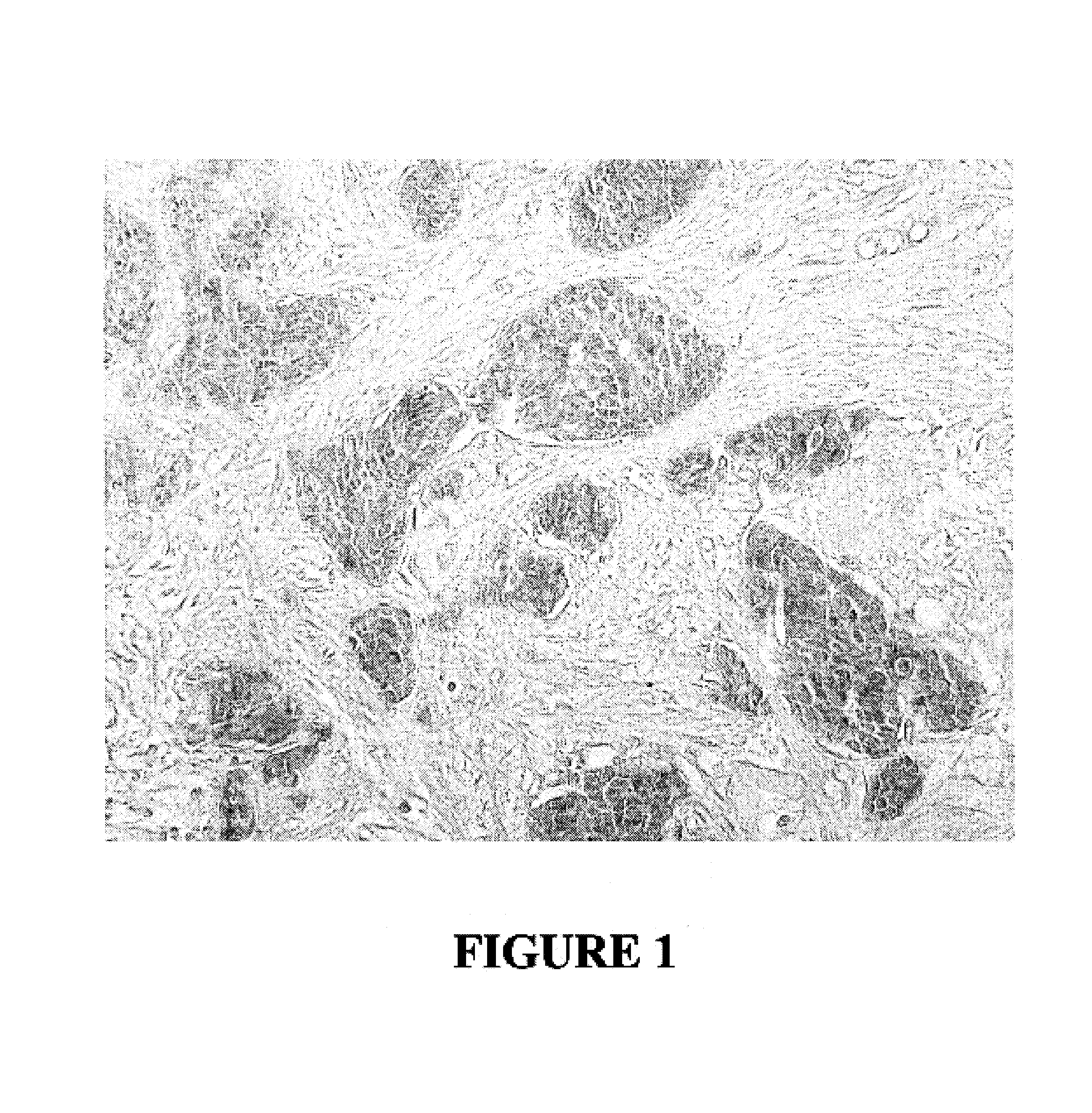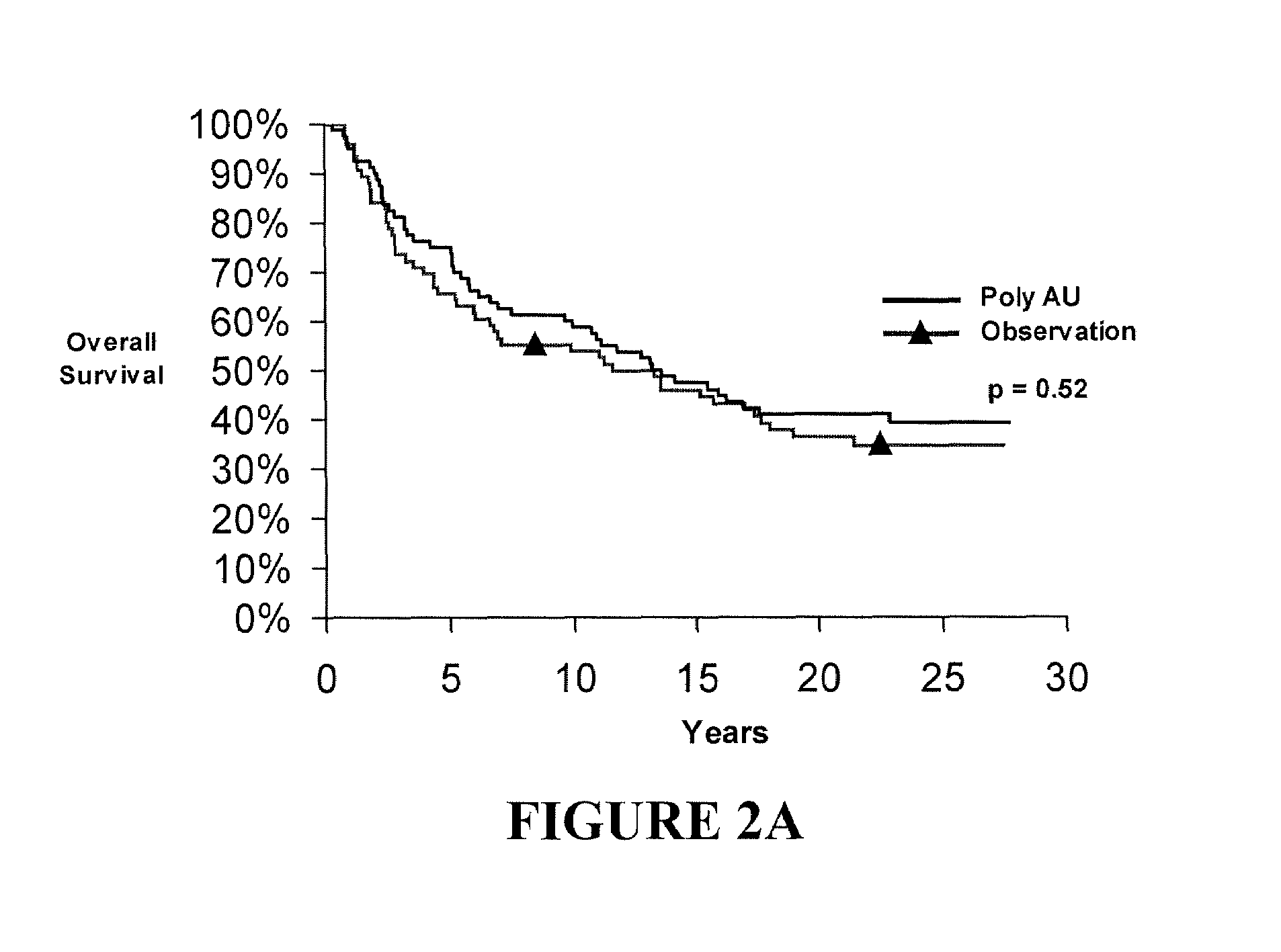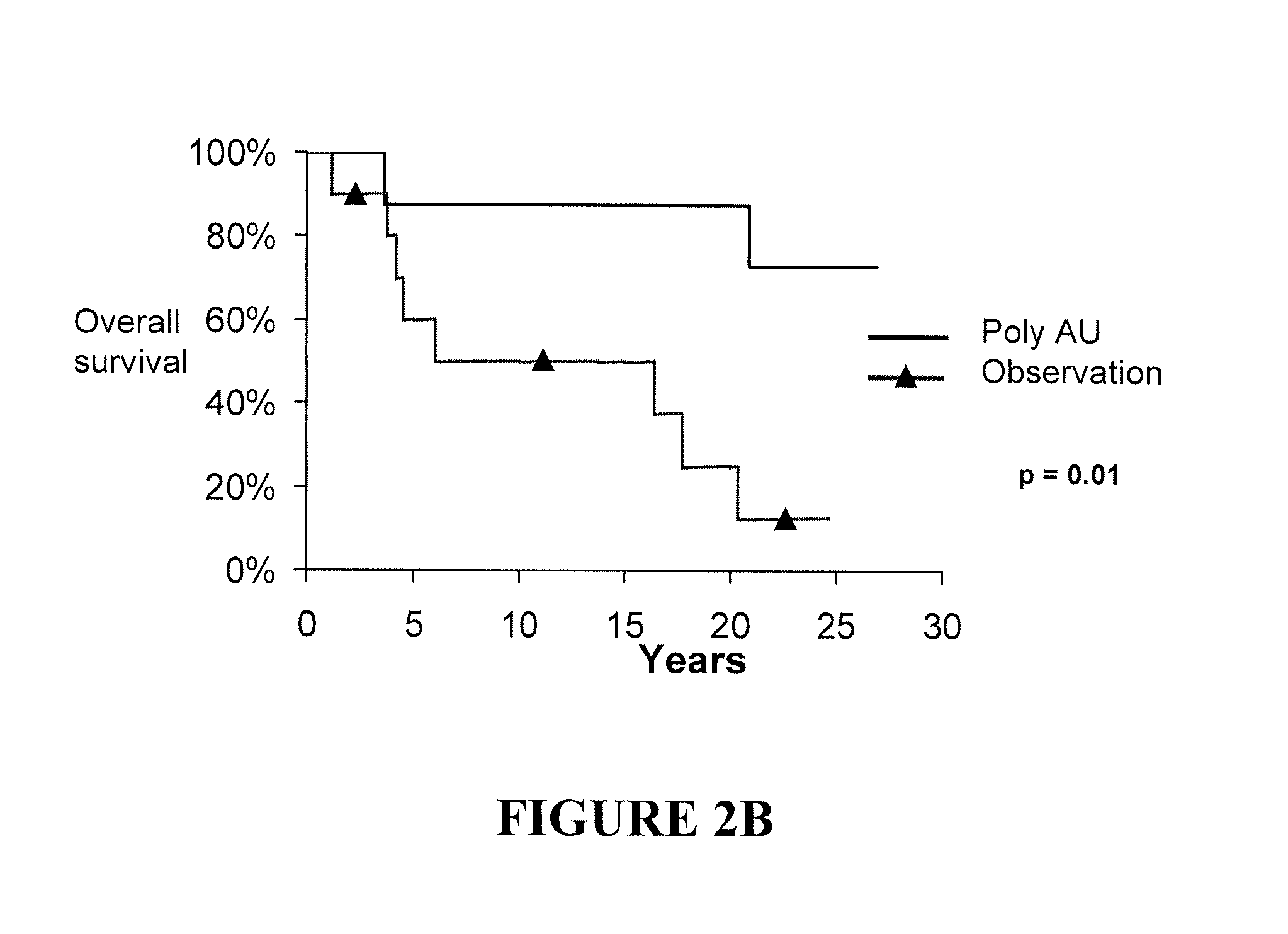Treatment of cancer using TLR3 agonists
a technology of agonists and cancer, applied in the field of genetics and medicine, can solve the problems of ineffective or serious side effects of current treatment options, affecting the survival rate of patients, and presenting significant drawbacks for patients, and achieve the effect of increasing survival
- Summary
- Abstract
- Description
- Claims
- Application Information
AI Technical Summary
Benefits of technology
Problems solved by technology
Method used
Image
Examples
examples
[0225]Toll like receptor 3 (TLR3) is known to be expressed by myeloid dendritic cells (DC) and to induce their maturation following binding with double stranded RNA (dsRNA) or its synthetic homologues polyAU and polyI:C. Several clinical trials have reported that injection of dsRNA is associated with survival benefit in cancer patients. In the present study, the inventors have asked whether dsRNA could act directly on tumor cells through TLR3. Patients and methods: 300 patients with early breast cancer have been included from 1972 to 1979 in a randomized trial comparing post-operative administration of polyAU with no treatment. Results have been reported that showed a trend for a survival benefit in patients with involved auxiliary lymph nodes (n=200).
[0226]Tumor biopsies from these patients were stained with TLR3-specific mAb and correlation between TLR3 expression and polyAU efficacy was determined.
[0227]To investigate directly the effects of dsRNA, both freshly isolated breast tu...
PUM
| Property | Measurement | Unit |
|---|---|---|
| temperatures | aaaaa | aaaaa |
| temperatures | aaaaa | aaaaa |
| temperatures | aaaaa | aaaaa |
Abstract
Description
Claims
Application Information
 Login to View More
Login to View More - R&D
- Intellectual Property
- Life Sciences
- Materials
- Tech Scout
- Unparalleled Data Quality
- Higher Quality Content
- 60% Fewer Hallucinations
Browse by: Latest US Patents, China's latest patents, Technical Efficacy Thesaurus, Application Domain, Technology Topic, Popular Technical Reports.
© 2025 PatSnap. All rights reserved.Legal|Privacy policy|Modern Slavery Act Transparency Statement|Sitemap|About US| Contact US: help@patsnap.com



